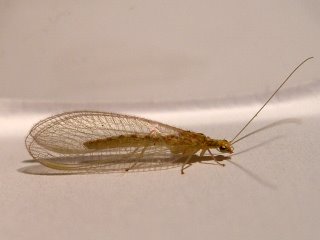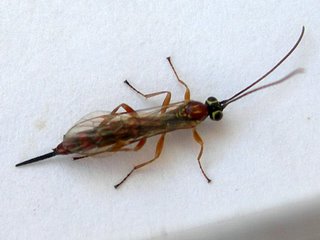Why is it not green ?

I found this lacewing on the wall outside the bathroom during the evening of 27th December. I wasn't expecting to find any more insects in 2006, and therefore I think this was a belated Christmas present from Santa.
For the beginner amateur naturalist like myself, this insect has an interesting identification feature. The books will tell you that there are green and brown lacewings and on first glance this one looks like a brown type. However, Chrysoperla carnea is a pale green lacewing that prior to hibernation becomes flesh-coloured and often enters our houses. It is one of the few lacewings that pass the winter in the adult state. This one measured 15mm from head to wingtip, which again clinches it and is very common in gardens.
Adults and larvae feed mainly on aphids and therefore this is another ally of the keen gardener. Anyone who received an insect sprayer for Christmas should put them up for sale now on ebay and let these wonderful little critters do the work for you.
I have checked my records for previous sightings of this species in the house and have noted the following:
14/03/05, 20/03/05 & 06/03/06. Presumably, in March it is coming out of hibernation, and therefore this is the first time I have noted it prior to hibernation.



